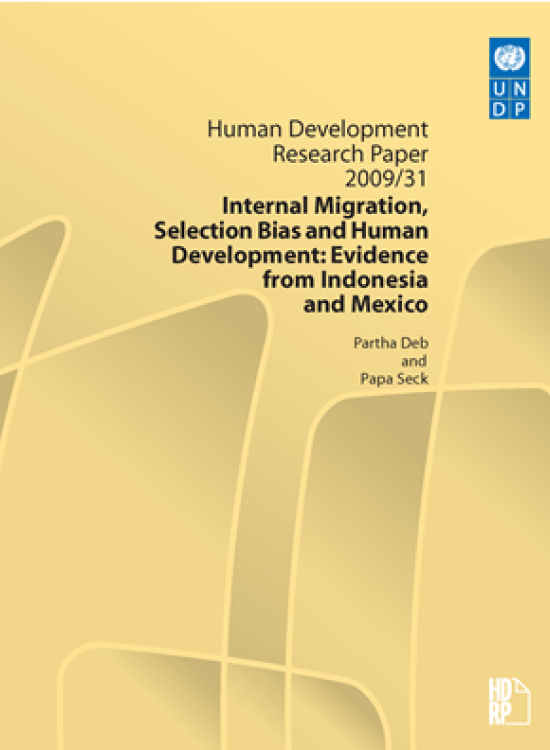Internal Migration, Selection Bias and Human Development
Evidence from Indonesia and Mexico

Download Report by Language
Document
hdrp200931.pdf
(840.65 KB)
Citation
Deb, Partha, Seck, Papa. 2009. Internal Migration, Selection Bias and Human Development: Evidence from Indonesia and Mexico. New York.
Internal Migration, Selection Bias and Human Development
Evidence from Indonesia and Mexico
Posted on: January 01, 2009
The aim of this paper is to measure the returns to migration using non-experimental data taking both observed and unobserved characteristics into account. A significant challenge related to migration research and the issues of unobserved heterogeneity is that the standard 2stage least squares estimator (2SLS) is strictly only applicable to situations with linear and continuous treatment and outcomes, both of which are not appropriate for models of migration and many outcomes of interest. Furthermore, migration is not always a binary process given that people migrate to city or non-city locations and some migrants do return. Introducing these multinomial treatment effects means that one cannot rely on standard 2SLS methods. Using panel data from Indonesia (Indonesia Family Life Survey—IFLS) and Mexico (Mexican Family Life Survey— MxFLS) and applying non-linear instrumental variable (Heckman’s treatment effects model) and maximum simulated likelihood models, we measure the impacts of migration on a broad range of variables that include socio economic outcomes such as consumption, nutrition, health status and emotional well-being for adult household members and health and schooling outcomes for children. We find consistent results for both countries that point to significant trade-offs related to migration. We found that migration can greatly improve socio-economic status through increases in income or consumption but can also be detrimental to the health status and emotional well-being of migrants and/or their extended families.